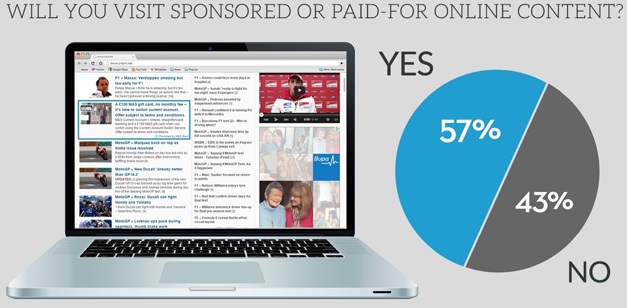57% of Brits under the age of 34 will engage with native ads if the content appeals to them, rising to 63% for 18-24s, according to new research.
The study, from Adyoulike, indicates that feature articles were found to be the type of paid-for online content more people prefer to consume (32%), followed by list-based articles (24%), videos (17%) and sponsored social media posts (13%).
The study of 1,000 UK adults aged 18-33 also revealed that consumers are increasingly more aware of the terms online marketers, publishers and content providers use, with 52% saying that they are familiar with ‘editorial’ and 41% with what ‘sponsored’ means. 32% said that they know what an advertorial is, while 29% understand the concept of branded content.
The survey also found that news was the most popular subject matter of online content (viewed by 76% of users), followed by sport (38%, up to 61% among men) and lifestyle pieces (24%).
85% said that they prefer to get their online news fix from traditional media sources such as newspaper websites or the BBC, rising to 93% for 18-24-year-olds.
Only 6% of all users go to newer news providers such as BuzzFeed and Mashable and 9% use news aggregators such as Twitter, Facebook or Feedly.
“Consumers are switched on to our terminology now more than ever – and as we see this increase in familiarity with the way we interact with people, we need to ensure the way we label things are correct and visible,” said Francis Turner, managing director of Adyoulike.
“As we’ve seen with the recent IAB guidelines, it needs to be obvious that a piece of native content has been paid for – and just calling it ‘branded’ on the web page may be insufficient.
“Native ads don’t have to try and ‘trick’ consumers into thinking they’re viewing standard content, whether it be through video, online or mobile – this study shows that if the content is good enough, people don’t care where it came from.”
View the infographic below:
